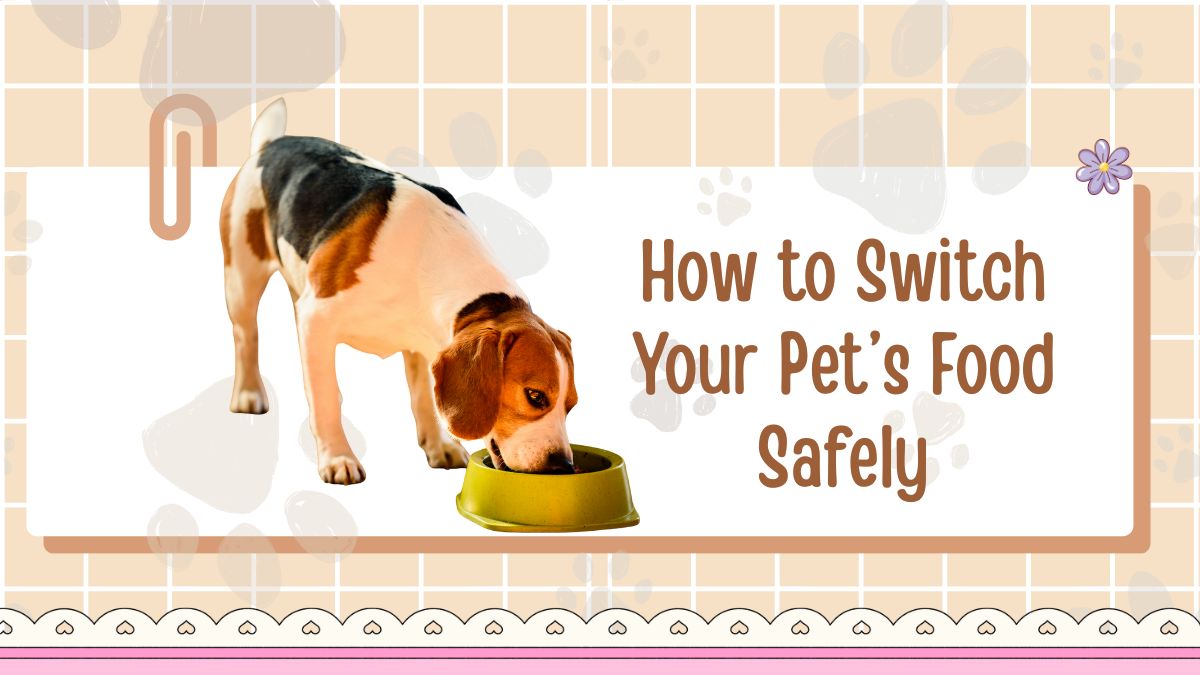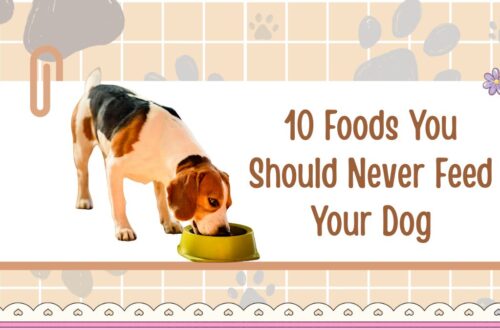Changing your pet’s diet can feel daunting, yet the decision to switch to a new food is often necessary—whether due to life-stage changes, health conditions, or simply a brand update. But a hasty change can lead to digestive upset, food refusals or worse.
With the latest advice in 2025, it’s more important than ever to follow a safe food transition plan for your dog or cat.
This article covers every detail you need: why a switch might be necessary, how to do it step-by-step, special considerations, a fact table, and helpful FAQs so you can execute the transition confidently.
Why You Might Need to Switch Your Pet’s Food
There are several common reasons why pet owners are advised (or must) switch their pet’s diet:
- Life-stage changes: Puppies or kittens mature into adults; adults become seniors. Nutritional needs change accordingly.
- Health conditions: When pets develop allergies, gastrointestinal issues, kidney disease, or weight problems, diets need adjustment.
- Food recall or discontinuation: If the current brand is no longer available, you’ll need to choose a new one.
- Palatability or preference issues: Some pets reject certain textures/flavours, prompting a change.
- Improved formula or updated nutritional standards: A brand may update its recipe, or you may find a food better suited to your pet.
Understanding why you’re switching helps you choose a food that meets the specific need and plan the transition accordingly.
The Risks of Switching Too Quickly
Switching diets abruptly can trigger several problems in pets:
- Gastrointestinal upset: vomiting, diarrhea, loose stools
- Refusal to eat new food: Especially for cats, texture and flavour changes can lead to aversion.
- Digestive disruption: Pets accustomed to one food may struggle to digest the new one without a transition
- Weight and nutritional issues: If the transition results in decreased intake or mismatched portions, pets may lose weight or fail to get balanced nutrition.
By being aware of these risks, you’re prepared to act carefully and spot early signs of problems.
How to Switch Your Pet’s Food Safely: Step-by-Step
Here is a clear, detailed transition plan, plus tips for monitoring and adjustments.
1. Consult Your Veterinarian
Before changing the diet, especially if your pet has health issues, speak to your vet. They can assess nutritional requirements, rule out underlying problems, and recommend suitable formulas.
2. Choose the Right Replacement Food
Ensure the new food is complete and balanced for your pet’s life stage. Try to match form (dry/wet), flavour profile, protein source, and calorie density to minimise disruption. If your pet has special needs (allergies, chronic disease), look for prescription or limited-ingredient diets.
3. Follow a Gradual Transition Schedule
Using the latest guidance:
- Days 1-2: ~75% old food + 25% new food
- Days 3-4: ~50% old + 50% new
- Days 5-6 (or 5-7): ~25% old + 75% new
- Day 7 (or day 8-10): 100% new food
For pets with sensitive stomachs (especially cats), extend this process to 10-14 days or more.
4. Monitor Your Pet Intensively
Watch for any of the following during the transition:
- Changes in stool quality (loose stool, diarrhea)
- Vomiting or excessive gas
- Refusal to eat or decreased appetite
- Lethargy or behavioural changes
If you detect issues, pause the transition, revert partially to the old food, or consult your vet.
5. Maintain Feeding Routine
Keep your pet’s feeding schedule consistent (meal times, location) so the only major change is the food itself. Avoid adding new treats or novelty items simultaneously which could confuse the pet.
6. Adjust Portion Sizes & Monitor Body Condition
Because new foods may differ in calorie content or nutrient density, check portion size so you don’t over-feed or under-feed. Monitor body weight and condition over the subsequent weeks and adjust accordingly.
7. Be Patient & Flexible
Every pet is different. If your pet shows discomfort, slow the transition even more and monitor over a longer period. For cats in particular, texture, flavour and smell matter a lot.
Transition Guidelines & Key Metrics
| Step | Typical Ratio (Old : New) | Observation Focus | Notes / Extended Time if Needed |
|---|---|---|---|
| Day 1–2 | ~75% old : 25% new | Appetite, stool consistency, interest | If issues, delay advancing |
| Day 3–4 | ~50% old : 50% new | Stool firmness, gas, behaviour | If issues, stay at this step longer |
| Day 5–6 (or 7) | ~25% old : 75% new | Final adjustment, feeding comfort | Cats may need more days here |
| Day 7+ (or day 8-10) | 100% new food | Full diet change, stable digestion | Monitor for 1-2 weeks for any late reactions |
| Duration for sensitive pets | 10-14 days or more | Extra care, slower ratio change | Especially for cats, GI issues or allergies |
Special Considerations
Pets With Sensitive Stomachs or Health Issues
If your pet has known digestive sensitivities, food allergies, or is recovering from illness, the transition must be slower and managed under veterinary guidance. Some may require a prescription diet or elimination diet trial.
Switching Between Food Types (Dry to Wet, or Vice-versa)
If the new food differs in form (e.g., dry → wet) or protein source, transition even more gradually because texture and moisture changes can trigger refusal or upset.
Life-Stage Transitions
Puppy → Adult → Senior: large and giant breeds may need puppy formulas longer (up to 15-18 months) to support skeletal maturity. Senior dogs may require lower-calorie or joint-support formulas.
Monitoring Caloric Density & Nutrient Differences
Two diets may have the same name but differ in calorie count or ingredient makeup. Always compare and adjust portions. If the new food has higher nutrient density, reduce portion size accordingly to avoid weight gain.
Switching your pet’s food safely is more than simply changing the bag—it’s about careful planning, monitoring, and adapting to your pet’s individual needs.
By following the recommended transition schedule, keeping a close eye on appetite and stool quality, maintaining consistency in feeding routines, and consulting your veterinarian when needed, you set your pet up for a smooth dietary change.
In 2025, as pet nutrition continues to evolve, you’ll be better equipped with up-to-date guidelines and practices. A well-managed transition results in better health, happier eating, and peace of mind for you as a pet owner.
FAQs
Most healthy pets can transition in 7-10 days using gradual ratios of old/new food. However, pets with sensitive digestion (especially cats) may need 10-14 days or more.




